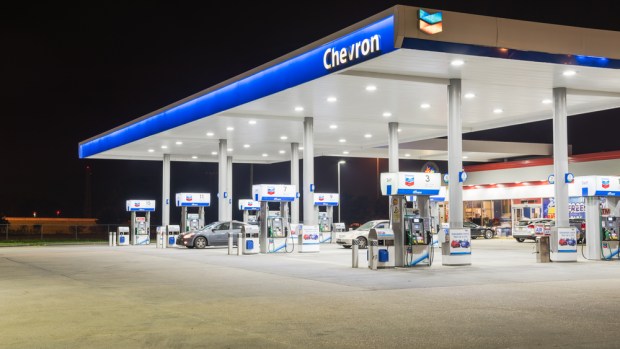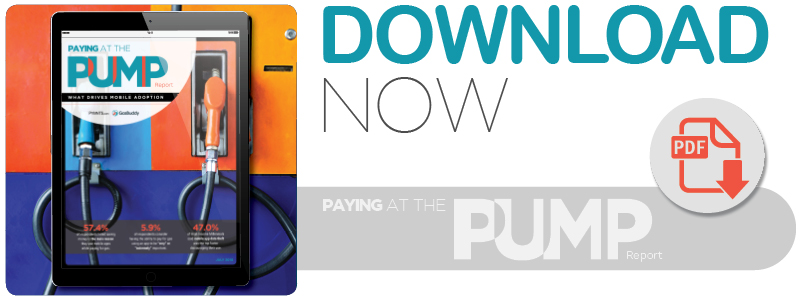Chevron Sees Smartphones Driving Gas Pump Evolution

One of the least enjoyable parts of driving is the trip to the gas station to refill a tank. This routine takes drivers off the road, adds time to their commutes and delays the process of getting to their final destination. Rod Tos, manager of customer payments and card services for energy provider Chevron, admits it’s a problem for gas stations nationwide. In the new Payments At The Pump Report, Tos explains how the smartphone is driving innovation at the pump.
The routine trip to the gas station to refill a vehicle’s gas tank is often the least enjoyable part of driving. It takes drivers off the road, adds time to their commutes and delays the process of getting to their final destination. It’s a challenge that Rod Tos, manager of customer payments and card services for energy provider Chevron, admits is a problem for gas stations nationwide.
“Buying fuel is not a desirable purchase,” he said. “It’s generally viewed as a negative experience. We recognize that.”
However, change could be on its way to the gas pump, and smartphone technology and mobile apps could help improve and speed a consumers’ gas refill experience. Chevron, which operates approximately 8,000 gas stations in the U.S. under both the Chevron and Texaco banners, is one of several companies — including Shell, Exxon Mobile, Gulf and Cumberland Farms — that see smartphones as key to reinventing consumer experience at the pump. And, as Tos told PYMNTS in a recent interview, the company has been exploring ways to integrate smartphones into the gas shopping experience.
Delivering Speed & Security At The Pump
Most consumers who visit a gas station are looking to get the transaction over with as soon as possible. Keeping that in mind, Tos said, it’s important for gas companies and stations to prioritize consumer convenience as they reinvent the gas-buying process. To deliver the convenience consumers expect, Chevron is placing emphasis on speed and security.
“They want that transaction to be as speedy as possible, and obviously they want it to be very secure,” he explained. “They don’t want their credentials stolen by a fraudster.”
Tos sees both app- and near-field communication (NFC)-based payments as ways to reinvent the gas station payment experience. Chevron has worked with Visa since 2015 to enable NFC payments at some of its stations, which can now accept both plastic cards and mobile payment options, including Apple Pay, Samsung Pay and Google Pay.
Raising Mobile Payments’ Visibility
To date, only a small fraction of Chevron’s stations — approximately 300 nationwide — are equipped to accept mobile payments, and their overall use to pay for gas is relatively low. In fact, Chevron has seen just a 2 percent penetration rate for payments made using mobile apps at the gas pump, with patrons preferring to pay using credit or debit cards.
While mobile payment usage at Chevron pumps is relatively low, Tos said accepting mobile payments helps the company to present itself as tech-forward and improve consumer satisfaction. Chevron customers who use mobile wallet technology are “extremely satisfied” with their payment experience, he said — more so than the average Chevron consumer.
“When we do focus groups of that customer set, they love it,” Tos said. “They repeat that pattern. It’s always the same consumers, and they think more highly of our brand because we offer it.”
Though mobile payment adoption is currently low, he believes this method will eventually catch on as awareness of the technology increases. In that regard, Chevron is preparing to offer the payment functionality that consumers will someday demand. While its mobile app does not currently offer mobile payment functionality, the company is testing payment capabilities with its own app to make gas pump payments more convenient for its consumers.
This feature could be especially beneficial to consumers who do not want to leave their vehicles when the weather is particularly harsh or because they have children with them. They can, instead, use their mobile devices to authorize the gas pump. From there, they only have to leave the vehicle to insert the nozzle into their gas tanks to start and complete the fueling process.
“We believe that there is a segment of the population which will prefer that form of payment,” Tos said.
Smartphone-Driven Payment Innovation
While Chevron has enabled some of its pumps to accept mobile payments, Tos described the company as “payment agnostic” in terms of the options in which it invests. He added that Chevron’s payment innovation strategy will be driven by the solutions consumers are seeking.
“We don’t want to drive a certain behavior,” he said. “What we want to do is meet the [payment] needs of our customers.”
Anticipating how smartphones shape that behavior will be key to delivering payment experiences consumers will appreciate, Tos added. They are already proving to be heavily influential for gas station purchases, even if payments are not the key reason consumers use an app.
“They have more data at their fingertips to shop for price, to shop by location or to shop for the features they are looking for,” he said.
For example, while not all Chevron stations carry diesel fuel, the mobile app can help consumers locate a station that meets their needs.
In addition to using apps to find the most suitable gas station, Tos added that app developers should pay particularly close attention to how the smartphone-friendly millennial generation uses their devices at the gas pump. Millennial consumers tend to be younger and have less disposable income than older, more-established consumers. These consumers also tend to be more tech-savvy than others, which means smartphones could play a greater role in the gas pump payment process as this group ages and gains a greater share of the purchasing power.
“In the beginning, you’re not going to see a great deal of penetration for this sort of payment,” Tos said. “It’s a small subset. It’s almost a niche, [and] we think it will grow over time as more people evolve toward using their smartphone devices.”
Automakers are also looking to help smartphones become more integrated with the payment process, he added, adding mobile apps into their vehicle lineups’ built-in software offerings.
Chevron recently partnered with South Korean original equipment manufacturer (OEM) Hyundai to integrate payments into a vehicle’s infotainment offerings. The service is designed to allow drivers to pull into a Chevron gas station and pre-pay by using the infotainment screen on the dashboard. Meanwhile, other OEMs, including Jaguar and Ford, are working on in-vehicle gas and parking-payment services of their own.
More Changes On the Way
Smartphones and mobile apps aren’t just changing the way consumers buy gas at the pump.
Tos pointed out that the technology has been driving changes in the transportation and mobility space for years, specifically in the rideshare market. Just as companies like Uber and Lyft have used smartphone technology to reinvent the way consumers get transportation, gas stations should also actively find ways to innovate to make consumers’ experiences more convenient.
“It’s incumbent on us to play in that digital space,” Tos said. “People are using digital apps to get rides, get information. That’s where we see that continuing to evolve and become increasingly digital.”
These innovations still might not make the task of refilling a vehicle’s gas tank any more enjoyable, but smartphone apps could go a long way toward making the experience more efficient for consumers — and toward helping them get back on the road, and to their destinations, more quickly.

